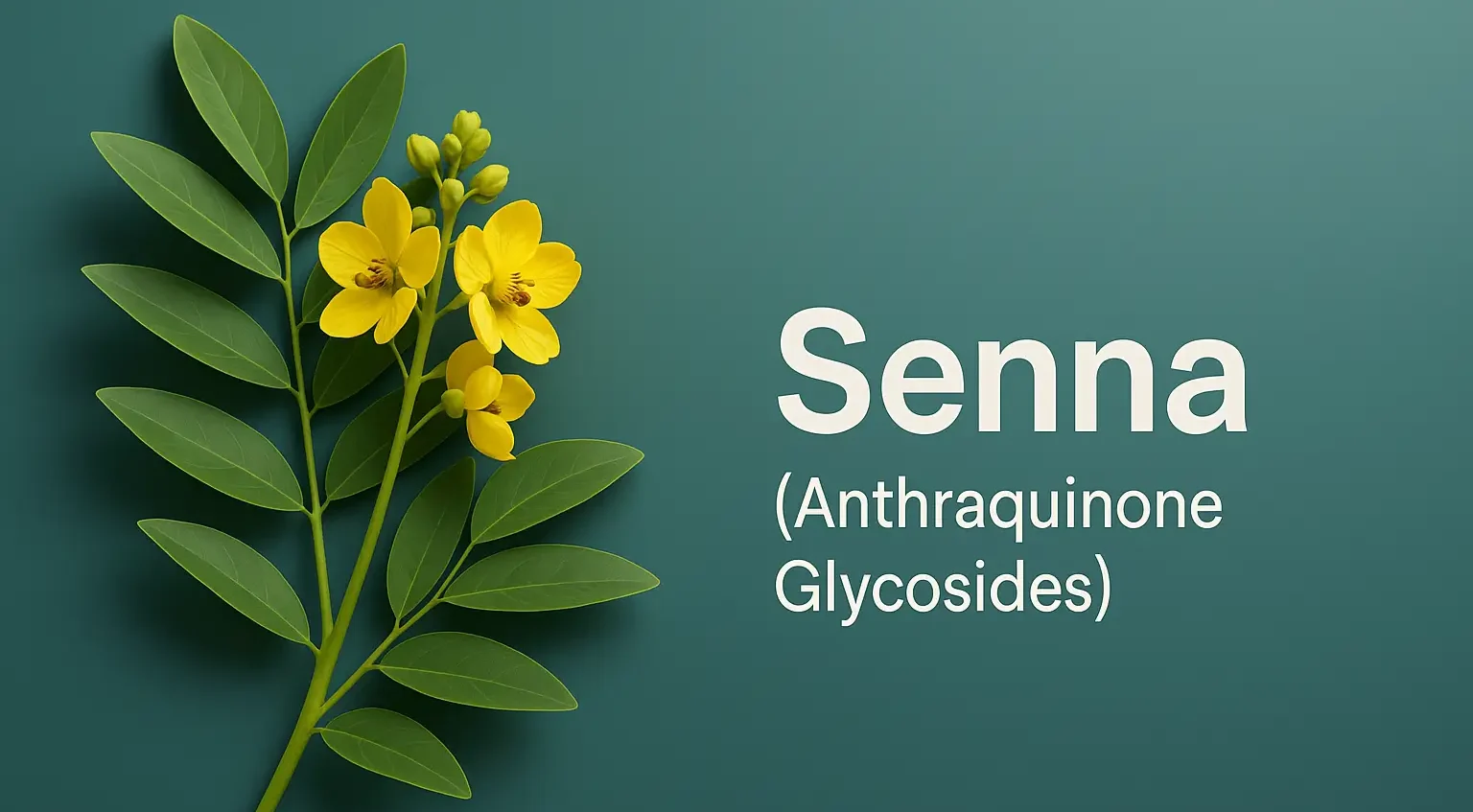General Introduction to Senna (Anthraquinone Glycosides):
- Senna contains anthraquinone glycosides, which are widely used as stimulant laxatives.
- The plant is recognized for its purgative effect on the gastrointestinal system.

Advertisements
Synonyms of Senna (Anthraquinone Glycoside):
- Common name: Senna
- Scientific name: Cassia angustifolia, Cassia acutifolia
- Synonyms: Indian Senna, Tinnevelly Senna, Alexandrian Senna
Biological Source:
- Derived from the dried leaflets and pods of Cassia angustifolia and Cassia acutifolia.
Advertisements
Family:
- Fabaceae
Composition:
- Major glycosides:
- Sennosides A and B: Main active anthraquinone glycosides.
- Other anthraquinones: Rhein, Aloe-emodin, Chrysophanol.
Advertisements
Chemistry & Chemical Classes:
- Chemical Class: Anthraquinone glycosides.
- Structure:
- Sennosides are dimeric glycosides formed from two anthraquinone units.
- They are hydrolyzed in the colon to release active anthraquinones.
Therapeutic Uses:
- Laxative: Used to treat constipation by stimulating peristalsis in the colon.
- Purgative: At higher doses, it induces bowel evacuation.
Commercial Applications of Senna (Anthraquinone Glycoside):
Advertisements

